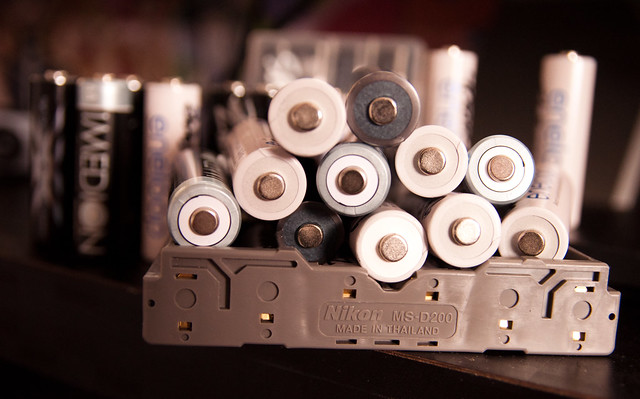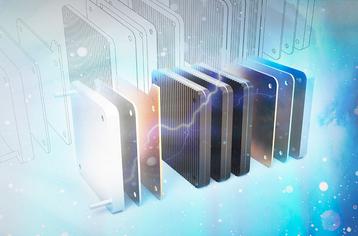Lithium Ion Battery Current Output-Capacity Information
Sep 17, 2019 Pageview:1109
Lithium batteries generally, including lithium-ion as well as lithium-hydride batteries, lately have become well known, loved and used for consumer electronics because they have a lightweight, high energy density and also relatively long life. Lithium can be very reactive and can spark into a fire when (surprisingly) exposed to water. However, modern lithium batteries make use of chemically bonded lithium, so no reaction can occur easily. Just like nickel, there are many variants of lithium batteries. However, the most popular at this time are the lithium-ion batteries. They are set up in a way that there is no free lithium during the charging or discharge cycle.
The use of lithium batteries for providing energy to grid and utility applications is on the rise as devices are being tested in different locations. In 2013, a pilot storage facility for large pilot batteries with a capacity of 2 MW was launched in the Orkney Islands, off the north-west coast of Scotland. This was also improved upon In 2017 when the US-based San Diego Gas and Electric opened a 30 MW facility for battery storage based on lithium-ion batteries and with a storage capacity of about 120 MWh. Southern California's energy provider, Edison, is also designing a 20 MW power plant. The future development of these lithium batteries could benefit from the interest of car manufacturers for their use on hybrid and electric vehicles.
How much lithium is in a lithium-ion battery?
From a theoretical point of view, metallic lithium does not exist in typical lithium-ion batteries. However, there is an equivalent amount of lithium content that has to be considered in a lithium-ion cell. It is calculated about 0.3 times the rated capacity of the battery (in ampere-hours).
A 2Ah 18650 lithium-ion cell has a lithium content of 0.6 grams.
For instance, in a 2Ah 18650 lithium-ion cell, the lithium content is about 0.6 g. A typical 60 Wh 8 cell laptop battery (4 in series and 2 in parallel) contains about 4.8 g.
For the Tesla 3250 mAh battery, the lithium content in it would be about (0.6/2) multiplied by 3,250 = 0.975 g Li.
At an operating voltage of about 4.2 V, the lithium content in it would now be:
0.975 / (3,250 × 4.2) = 0.0714 g / Wh = 0.0714 kg / kWh.
Those stats are for laptop and tesla batteries respectively. Chevy Volt, however, uses pouch cells that may have different lithium content. This could be the reason why there is a variation in lithium content. The content of lithium in the battery may depend on the model, the manufacturer and the geometry of the cell.
The lithium ions energy density is about twice the density of standard nickel-cadmium. Therefore there is a possibility of a higher energy density. The charging characteristics are relatively good and behave in the same way as nickel-cadmium from a discharging perspective. The high voltage of the 3.6-volt cells allows it to be designed as simple batteries. This is why most of our mobile phones today work with a single cell battery. A nickel-based battery pack will, however, require three-unit 1.2-volt cells and connected in series as well.
How many watts does a lithium-ion battery output?
The power supply capacity indicates the amount of energy that is stored in the battery. The power is often expressed in watt-hours (and the symbol is Wh). The watt-hour is a voltage (V) provided by the battery and multiplied by the current (amperes) that the battery can provide for a certain period (usually in hours). The voltage multiplied by Amps and also multiplied by Hours gives the Wh (Watt-hour) of the battery. Because the voltage for a type of battery is fixed because of its internal chemistry (as in alkaline batteries, lithium, or lead battery, etc.) it is only often the amp multiplied by hour measurement that’s printed on the side of the battery. And it is measured in Ah or mAh (NB. 1000 mAh =1Ah). To obtain Wh, you have to multiply the Ah by the nominal voltage. Take for instance, suppose you have a nominal 3V battery with a capacity of 1 ampere/hour, so this battery has a capacity of 3 Wh. 1 Ah also means that we basically have a current of 1Amp for one hour or 0.1 A for 10 hours or 0.01 A (which can also be denoted as 10 mA) for 100 hours.
Specification of a lithium-ion battery used in mobile phones
Specific energy 100–265 W·h/kg (0.36–0.875 MJ/kg)
Energy density 250–693 W·h/L (0.90–2.43 MJ/L)
Specific power ~250-~340 W/kg
Charge/discharge efficiency 80–90%
Energy/consumer-price 3.6 Wh/US$
Self-discharge rate 0.35 % to 2.5 % per month depending on the state of charge
Cycle durability 400–1,200 cycles
Nominal cell voltage 3.6 / 3.7 / 3.8 / 3.85 V, LiFePO4 3.2 V
How to improve lithium-ion battery current storage
But then, what happens when the battery on your CD or laptop goes flat either unexpected or suddenly? If your lithium battery is fully charged but does not last as long, there is clearly a problem with the battery. Unfortunately, you cannot repair a battery if corrosion or oxidation occurred inside of it. In other to avoid any or all of these painful consequences, you need to take some simple steps to extend the life of your lithium-ion batteries.
Keep the battery at 40% during the storage period
While it is the best practice to charge your battery fully before you use them, it is important that you do not fully discharge the battery before you change. Battery manufacturers store their batteries at about 60 degrees and 40% charge. The 40% charge ensures stable condition in the battery. There is also a need for some reserve battery for the protection of some circuits.
Do not leave the lithium-ion batteries at a high temperature.
These lithium batteries don’t like heat. By exposing them to a high temperature, you reduce their lifespan, charge, and runtime respectively.
Ensure you confirm the manufacturers’ production date
Once a lithium-ion battery is produced it starts to get closer to its death. A normal battery cost you about 20% of the lithium-ion battery strength. (This is not affected with how well or not you use it.) You should purchase a battery that has just been manufactured or produced (at least within a year of manufacture.)
Also, never over-charge your battery and avoid frequent complete battery discharges of your lithium-ion batteries.
- Prev Article: Li Ion Battery Capacity Tester-Useful Instruments
- Next Article: Lipo Battery Voltage Monitor – Tool Introduction
Leave Message
Hottest Categories
-
Hottest Industry News
-
Latest Industry News











